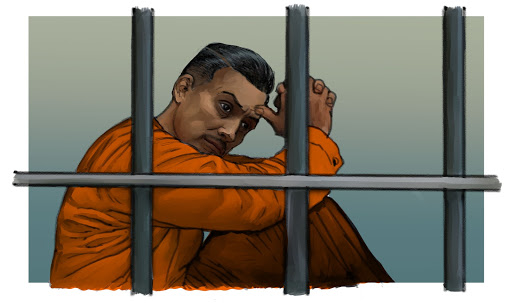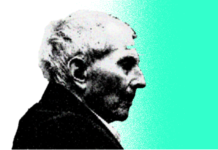On today’s podcast we present Parts Six and Seven of Mongol, our exclusive new Crime Story series written and read by Molly Miller that tells the story of the tragic killing of a police officer and the complex search for truth and justice in the aftermath of his death. You can find all of the previously published parts of the series here.

Part 6
Tensions sparked when Brady Sullivan presented Martinez with the evidence that he had shot Shaun Diamond. After speaking with his family, David was now convinced that the police had lied to him about the shooting. He believed Shaun Diamond’s death was never his fault. He was just the scapegoat taking the blame for the police firing on their own. Sullivan tried to reason with his client: he still had a strong self defense case even if Martinez shot an officer. But Martinez didn’t want a self defense case. He wanted to be absolved of Shaun Diamond’s death entirely. The interactions between client and attorney became increasingly contentious. Their friction fueled emotional outbursts, raised voices and impassioned arguments. Ultimately the men arrived at an impasse.
Martinez wouldn’t budge on his version of the story and Sullivan wouldn’t change his strategy.
Incensed by Sullivan’s refusal to accept their narrative, David and the Martinez family turned their back on the public defender. They pooled resources and hired private attorney Edward Esqueda. The lawyer appeared to be a Godsend. His law office was located near the Martinez home in San Gabriel, he spoke perfect Spanish, and he commanded a room with his charming smile. Most importantly, Esqueda agreed with the family that David didn’t shoot Shaun Diamond; the officer’s death was an accident caused by friendly fire. Esqueda told the family that the whole situation was a police cover-up and he was certain that they would win in court.
The community of San Gabriel united behind the Martinez family. Fundraisers were held to contribute to legal expenses, which initially amounted to $60,000 and were constantly growing with Esqueda’s long hours. Supporters and relatives gathered for BBQs in the park and Martinez’ niece, Pricilla, took to social media to expose what she considered to be the LAPD’s self-serving lies. Then, after more than a month apart, Sandra finally regained custody of Alyssa and David Jr. allowing the tight family to rally together and to lift Martinez’ spirits. Morale was high. Maybe that’s why the Martinez family overlooked Edward Esqueda’s spotty legal history.
According to the California State Bar public records, Esqueda faced private reproval in 2001 for failure to respond to client inquiries, failure to promptly release a client file, and failure to keep a client informed of significant developments. In 2011 he was suspended by the State Bar for 90 days after misusing a client trust account for over $85,000 in personal and business expenses. Then in 2012, Esqueda was placed on probation by the State Bar and forced to pay a former client $7,500 after his efforts to negotiate a settlement were judged as insufficient and he failed to return unearned legal fees. Legal message boards were filled with complaints from former clients about Esqueda’s disrespectful attitude and incompetence, but Martinez himself was too distracted to investigate his lawyer’s past. He had to focus on the gut-wrenching task at hand: his preliminary hearing.
On the day of the hearing, Esqueda took charge in the courtroom with practiced bravado. Martinez’ parents, Guadelupe and Arturo, were called to testify in addition to the medical examiner and Shaun Diamond’s partner, Richard Aguiar who was part of the SWAT team operation. Deputy DA Jack Garden painted a straightforward picture — Martinez was a gang member who saw the officers and took his shot. The slug went straight through Arturo’s arm and blew through Shaun Diamond’s neck. While Martinez’s parents maintained that their son didn’t shoot the fallen officer they both testified that they heard the police announce themselves on the night of the incident. The medical examiner testified that during the autopsy he found several metal fragments in Diamond’s brutalized airway suggesting that the injury came from a shotgun. And Richard Aguiar testified that upon entering the Martinez household he heard David yell “I’m sorry. I thought you were the Mongols.” When Esqueda cross-examined the witnesses he floundered. He challenged Richard Aguiar about his training, insinuating that Diamond’s death was the result of friendly fire. That line of questioning was immediately buried in objections from the prosecution. Jack Garden was quick to point out that the SWAT team only used beanbag shot. Esqueda attempted to pivot, asking the medical examiner if the metal fragments found during Diamond’s autopsy could have come from a door breaching explosive.Subsequent witnesses refuted his theory, explaining that no explosives were used to open the door, only a ripram – a manual push-pull device.
Despite the set-backs, Esqueda fumbled onward. Blustering with frustration he told the court “There’s not one scintilla of evidence that David Martinez shot Shaun Diamond.”
After two days, the preliminary hearing came to a conclusion. The judge found sufficient cause to move forward with the trial.

Part 7
In the wake of the preliminary hearing, David Martinez slowly awakened to the state of his feeble defense with Edward Esqueda. The evidence and the full force of the state were mounted against him and his lawyer was suspiciously absent, difficult to contact, and abrupt in his correspondence.
He felt abandoned, waiting in Men’s Central Jail as time ticked forward. Past the crisp leaves of autumn. And the festivities of Christmas. And the flowers of spring.
During all that time, the threat of the death penalty hung above Martinez’s head keeping him up at night.
But his torture was not simply mental: Martinez was also physically assaulted and threatened. In the shadowy halls, he was attacked with a shank and sustained a gash to his arm. Corrections officers heard rumors that gang members intended to kill Martinez and he was moved from his block for his safety. Unfortunately, the change in environment provided no solace: Martinez’s new block was filled with alleged rapists, pedophiles and child-murderers.
Their screams echoed off of concrete walls and they threw their feces at the guards. It was even worse than living in fear of the Mongols. Eventually, Martinez was moved back to the Mongols’ cellblock where he continued to reside in fear but could at least sleep in peace for a few hours at night.
The agitated rhythm of Martinez’s life in jail was punctuated by court dates. Continuances and motions pushed the trial further into the distance. The judicial horizon ever retreating, always miles ahead. Three years passed and it seemed everything was the same.
Except for David Martinez. The time changed him.
After the weeks, months and years in jail he was desperate to be free to take care of his family. He wanted to watch his children grow up and he was willing to do anything to make that happen, even if it meant confronting the horrific truth.
David was ready to accept that he shot Shaun Diamond. It was his bullet that stuck his father’s arm and blew through the officer’s neck.
In the fall of 2017 David Martinez fired Edward Esqueda — a man he would later call a “liar” who “doesn’t deserve to be called an attorney” — and the court reappointed Brady Sullivan as counsel. Sullivan was glad to be back on the case but he was apprehensive about Martinez, given their abrasive parting. But when he met with David, it was like he was meeting with a different man. This man took full responsibility for shooting a police officer.
Sullivan’s past frustration with Martinez dissipated. He reminded his client that all hope was not lost. They had a strong self-defense case. The SWAT team had been issued a “knock warrant” meaning that they had to clearly announce themselves before entering the premises. If Martinez didn’t hear the police announce and he didn’t see them before firing the gun, then he was innocent of murder. Sullivan only needed to prove that the banging on the gate, the barking of dogs and the physical chaos of the scene made it impossible for Martinez to identify the cops. It had all happened in seven seconds. Now Sullivan and Martinez would have to account for each of those moments.
But Sullivan knew that the jury would judge more than the seconds and the shot. They would judge David Martinez as a person. If they saw him as a cold-blooded gang member, then chances of a favorable outcome were slim. Sullivan also needed to prove that Martinez had been trying to leave the Mongols, that he was a just guy who liked motorcycles who got in over his head. It was fear of repercussions that kept him in the Mongols’ grasp.
With all this responsibility weighing on Sullivan’s shoulders, he arrived at counsel’s table for pre-trial motions. There he reunited with prosecutor Jack Garden who was now joined by co-counsel Michael Blake – a man who had the easy confidence and commanding stature of a politician. The room was already tense. It was clear from the outset that the trial would not be amicable.
Sullivan motioned to admit a recording of David in the police car in San Gabriel, a videotape of Martinez in the Montebello jail, and audio recordings from the Perkins operation. All three elements of evidence would be critical during trial as they included exculpatory statements from David Martinez. At various points in each recording Martinez asserted that he didn’t know it was the cops at his door and that he thought it was the Mongols. The recordings also proved that David didn’t brag about his actions to the other Mongols at Montebello or during the Perkins Operation. On the contrary, he expressed concern for the officer who was shot and remorse for the tragedy that had occured.
After reviewing the evidence Judge Olmedo ruled the tape of Martinez in the police car as inadmissible and refused to make a firm ruling on the admissibility of the Montebello or Perkins recordings. It was a blow to Sullivan, who knew that the tapes could offer the jury a valuable snapshot of his client’s emotional and mental state in the hours after the incident.
Disappointed by the court’s rulings, Sullivan remained resolute, diving head-first into developing his defense.
He believed in his case and his client but the question remained — how could he convince a jury to not convict a man who shot a cop?
The task, although not impossible, would be extremely difficult, even for a trial attorney with Sullivan’s decades of experience. But he knew something that gave him hope — during the time Esqueda served as Martinez’s attorney, the DA’s office had decided not to pursue the death penalty. Instead they would be charging first-degree murder. This was a massive win for David Martinez, but Sullivan knew it meant something more. The DA’s office only pursued the death penalty when the case was rock solid. If prosecutors had decided to eschew the death penalty, that meant they had doubts.
There were cracks in their case and he would find them.



